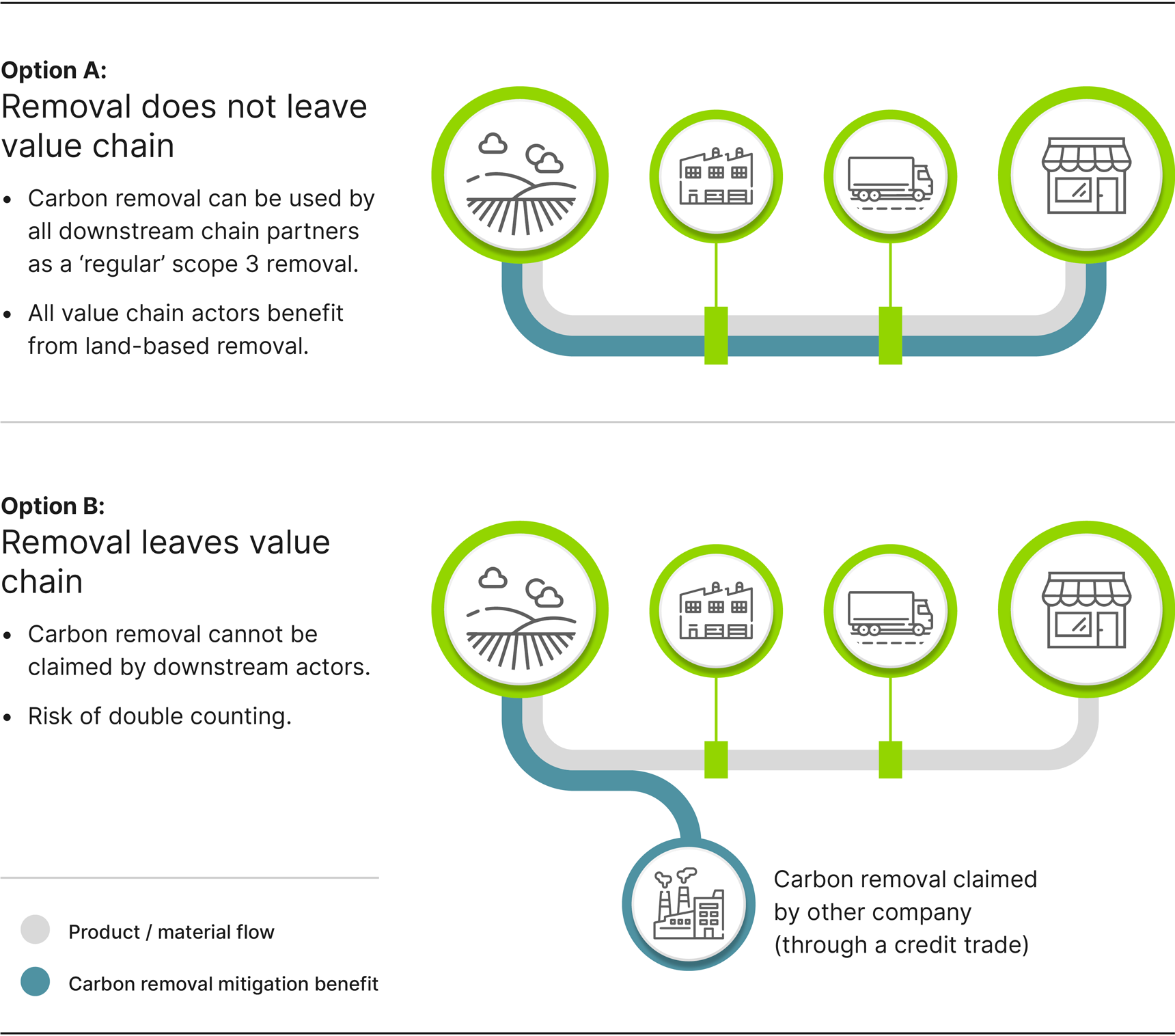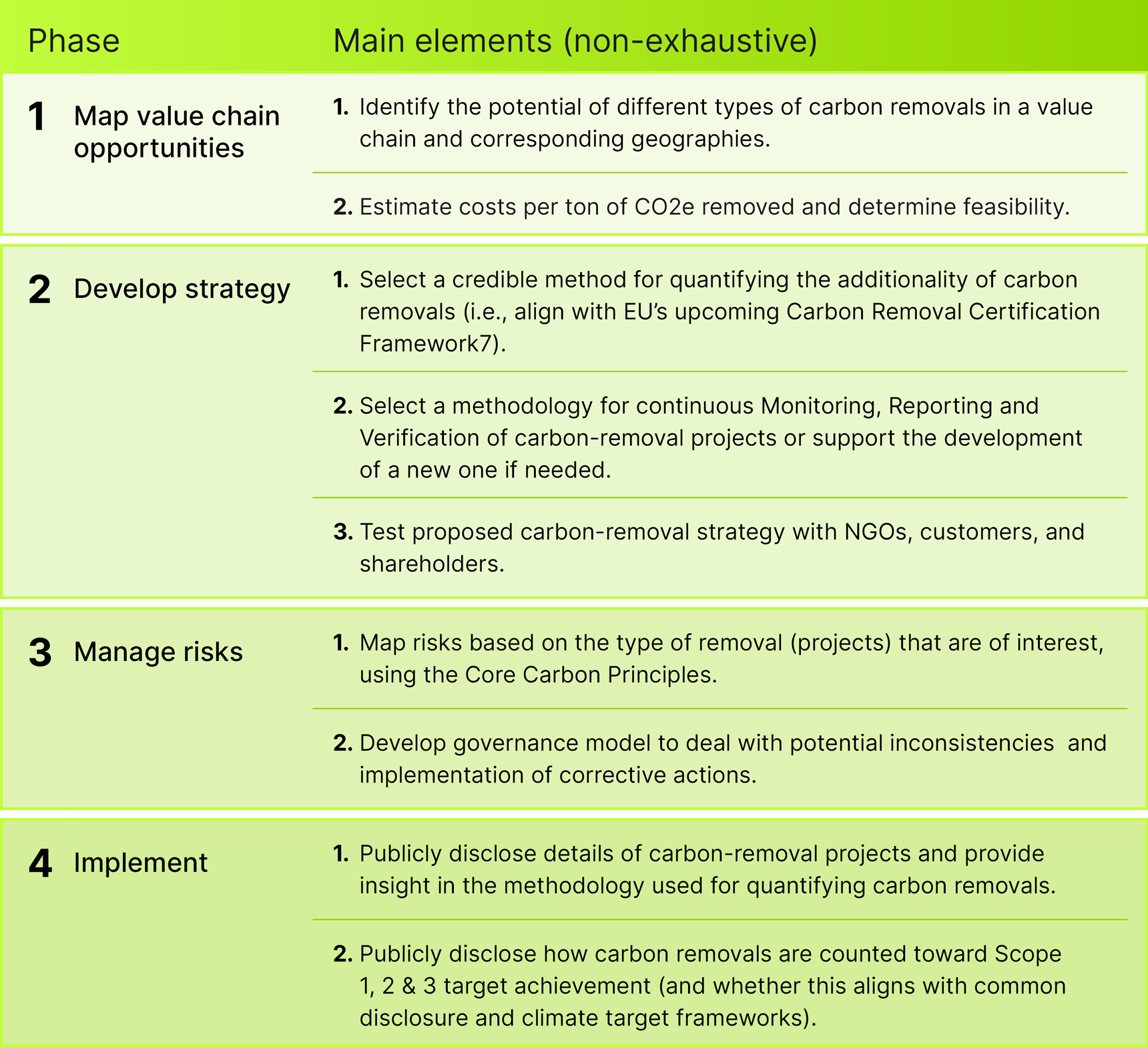Renewed potential for carbon removal thanks to SBTI FLAG
The Science-Based Targets initiative (SBTi) launched the new Forest, Land and Agriculture Guidance (FLAG). The FLAG Guidelines provide sector-specific guidance for setting climate targets for land-based emissions and removals. Before their introduction, high-quality carbon removal played only a limited role in achieving companies’ climate goals, because they were only accepted as a method to neutralize residual emissions that a company cannot limit in the long term.1, a point in the decarbonization process that many companies have not yet reached. SBTi FLAG now offers companies operating in land-based value chains the opportunity to account for carbon removals to reduce their FLAG emissions.
As a result, it is now possible for a farmer to achieve net negative emissions (on-farm), and for actors in the downstream value chain to account for these negative emissions in Scope 3, rather than reporting them separately from the footprint. This reduces their overall Scope 3 footprint. These types of land-based carbon removals do not require carbon removal credits to be obtained.
Business Risks of Carbon Removal Credits
Rather, companies have come to recognize the mitigation potential of suppliers that generate credible carbon removals, lowering the Scope 3 footprint of value chain partners (Exhibit 1, Option A). Alternatively, farmers can decide to sell the claim on their removals as credits to companies that are part of a different value chain via the Voluntary Carbon Market (VCM). When carbon removals leave the value chain (Figure 1, Option B), it is no longer possible to take into account the additional benefit, according to the draft Land Sector and Removals Guidance of the Greenhouse Gas Protocol.
Future policies will regulate carbon removal using standardized methodologies
Carbon removal has been a largely unregulated topic for years, relying instead on VCM certification standards. The European Commission’s (EC) upcoming Carbon Removal Certification Framework (CRCF) will take the first steps to develop regulations on how to quantify and verify the climate benefits of carbon removal, encouraging further market development. Additionally, the California Air Resources Board (CARB) has proposed the Carbon Dioxide Removal Act, as part of which CARB aims to establish rules and processes for certifying carbon removal practices.
The policies proposed by the EC and CARB are likely just the first step by international policymakers in regulating how consumers and businesses account for and report on carbon removal. In the absence of clear regulatory standards, companies are reluctant to invest in and account for carbon removal for fear of greenwashing lawsuits.
Corporate Due Diligence to understand carbon removal risks and opportunities
Companies must devise a carbon removal strategy before committing to long-term carbon removal programs, or face suppliers seeking to sell carbon removal as credit to parties outside their value chain. By establishing appropriate minimum requirements that ensure credible use of takedowns, the risks of greenwashing allegations and lawsuits can be minimized.
Why Guide House?
Guidehouse helps organizations design and implement their sustainability strategies, including with regard to nature, from calculating impact, setting goals and assessing risks to designing implementable solutions and innovative financial models.
Table 2 below shows how Guidehouse can support its clients in developing a credible carbon removal strategy in line with best climate frameworks and initiatives.



